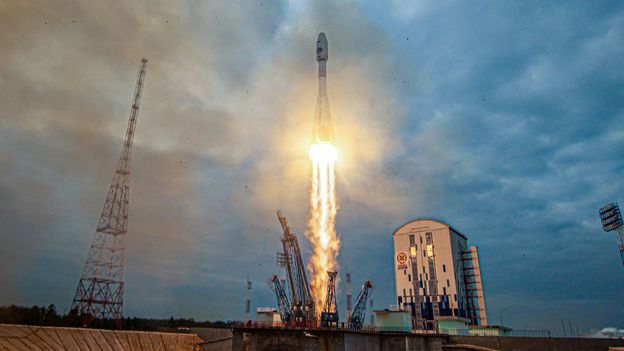For decades, our reading of things that happen in space has been unavoidably shaped by the original space race of the 1960s, in which the United States and the Soviet Union vied to put a human being on the Moon. Despite the Soviet Union becoming the first nation to put a satellite in Earth orbit, launch a human into space, and land an uncrewed spacecraft on the Moon, the US grabbed the biggest prize of all when the Apollo 11 mission carried astronauts to the lunar surface. Their adventure was broadcast on TV screens around the world and it was followed by further crewed Apollo missions in subsequent years, with the last taking place in 1972. More than 50 years later, the US remains the only country to have achieved a crewed Moon landing.
The Indian lander, Chandrayaan-3, blasted off from Earth on 14 July, packed with a payload of scientific equipment as well as a small, six-wheeled rover for exploration of the lunar surface. It’s due to touch down on the lunar surface on 23 August after first sling-shotting around the Earth a few times and spending several weeks orbiting the Moon in preparation for the landing. The Russian lander, meanwhile, Luna-25, departed our planet only recently, taking off just after 2am Moscow time on 11 August (11pm GMT 10 August). It is taking a much faster, more direct route to the Moon and could reach the surface in as little as 10 days post-launch, on 21 August. Officials at the Russian space agency Roscosmos have made no secret about their desire to be first to make a soft landing at the Moon’s South Pole.
But Luna-25’s journey might take slightly longer than that, meaning Chandrayaan-3 could arrive on the Moon first, in the end. Slow and steady could win this race.
The missions, however, reflect the renewed interest in the Moon for space exploration. The recent discovery of significant pockets of water ice on our nearest celestial neighbour has excited scientists because hydrogen in the water could potentially be extracted to make rocket fuel at a future Moon base. Plus, the water might even be drinkable after treatment.
The so-called race between Luna-25 and Chandrayaan-3 encapsulates a new era of lunar exploration, in which nations including the US, Israel, and China, as well as private companies, are targeting the Moon with spacecraft and forthcoming crewed missions. For many, it’s just friendly competition. And yet, a fresh chapter of human exploration is at stake. The small steps taken by individual landers and crewed missions could add up to giant leaps in conquering the Solar System in the coming decades and centuries. Who gets there first really could matter.
“It’s turned out to be more of a coincidence than anything,” says Wendy Whitman Cobb, professor of strategy and security studies at the US Air and Space Force’s Air University, referring to the timing of the Luna-25 and Chandrayaan-3 missions. “But it is a very interesting coincidence.” Luna-25’s launch has been repeatedly delayed – it was originally scheduled for 2021.
#Mission #Moon #win #Russian #Indias #race #lunar #South #Pole


